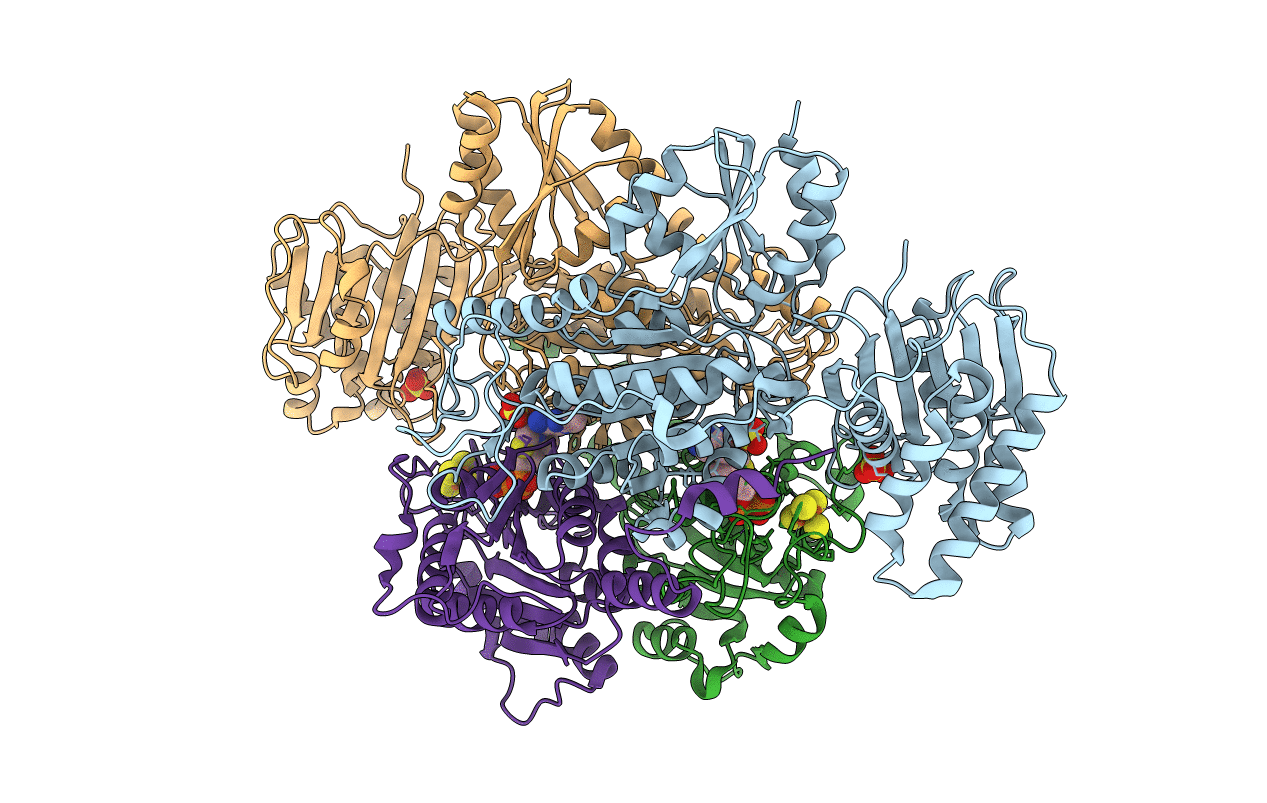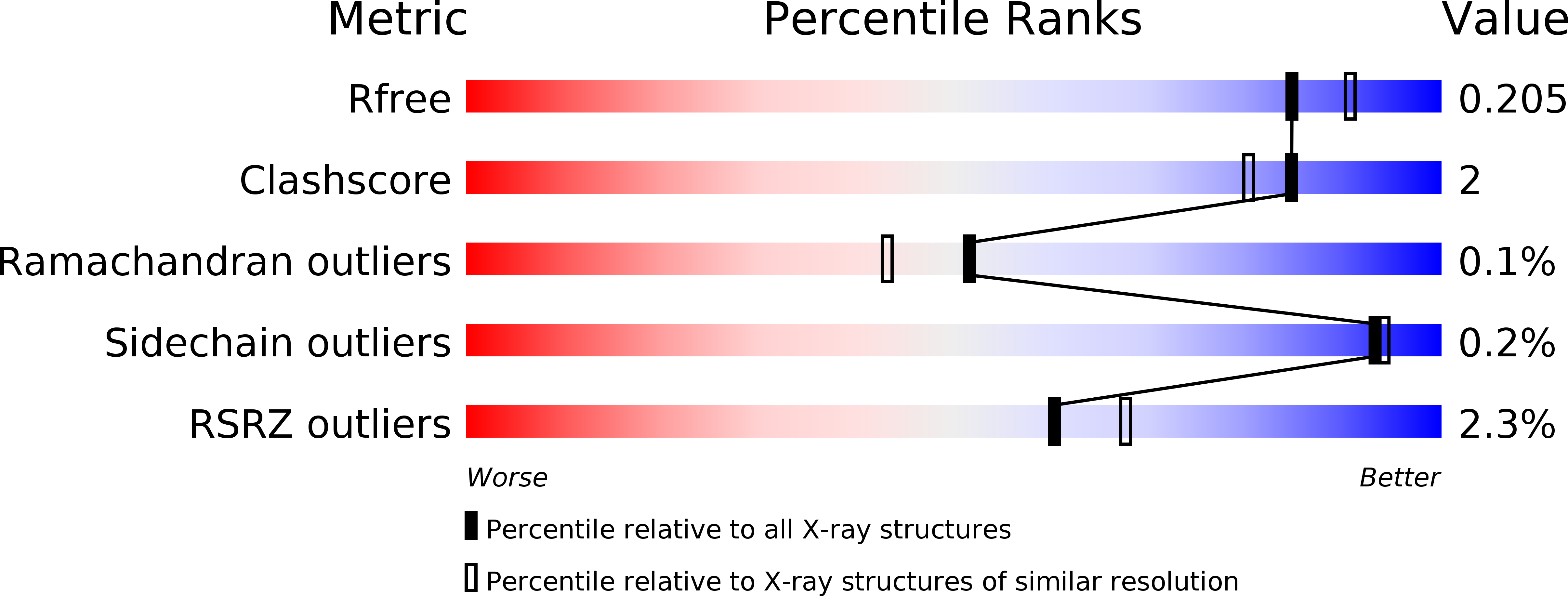
Deposition Date
2018-11-13
Release Date
2019-03-20
Last Version Date
2023-10-11
Entry Detail
PDB ID:
6N2N
Keywords:
Title:
Crystal structure of 2-oxoglutarate:ferredoxin oxidoreductase from Magnetococcus marinus
Biological Source:
Source Organism:
Host Organism:
Method Details:
Experimental Method:
Resolution:
1.94 Å
R-Value Free:
0.20
R-Value Work:
0.16
R-Value Observed:
0.16
Space Group:
P 21 21 21


